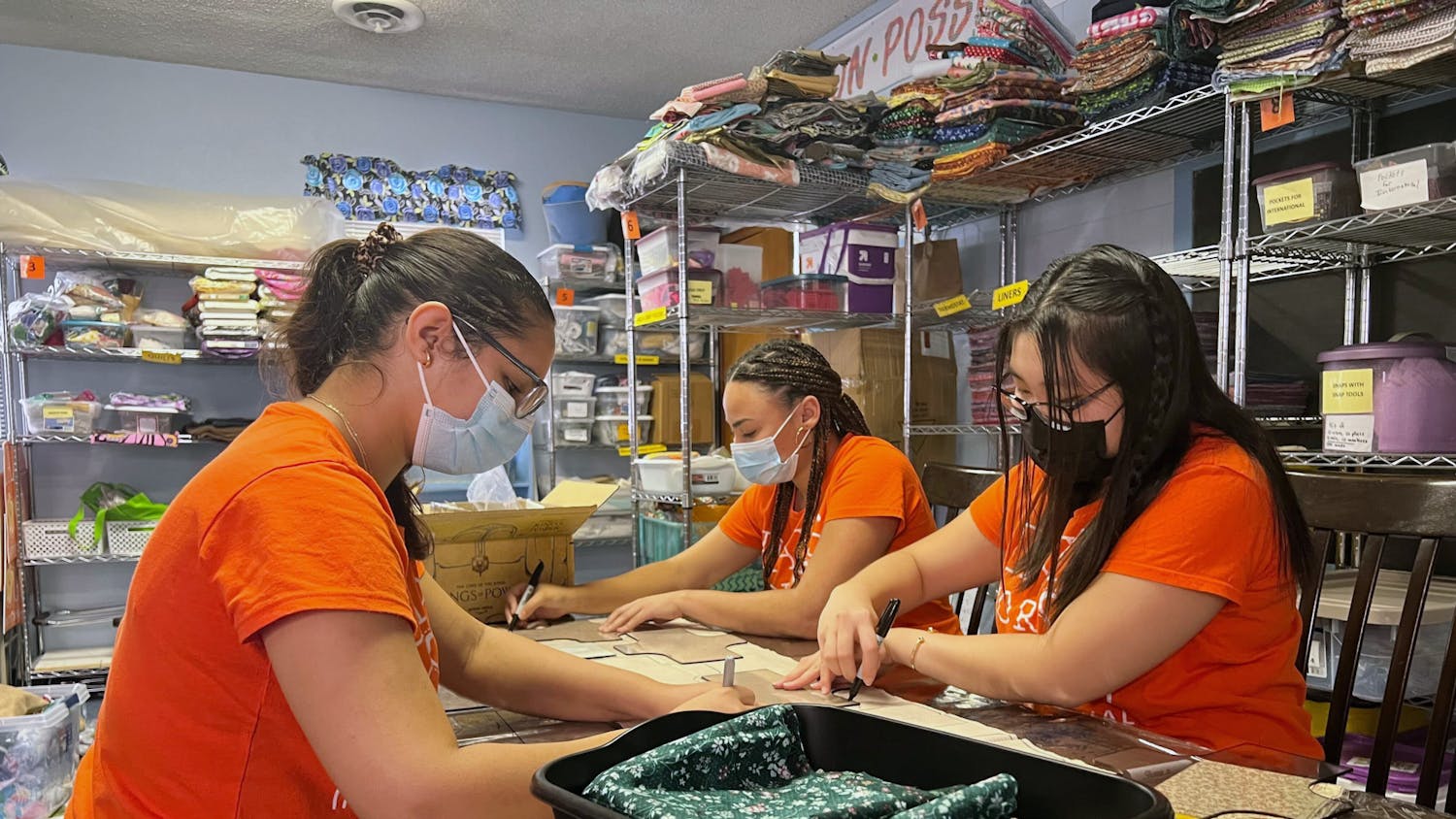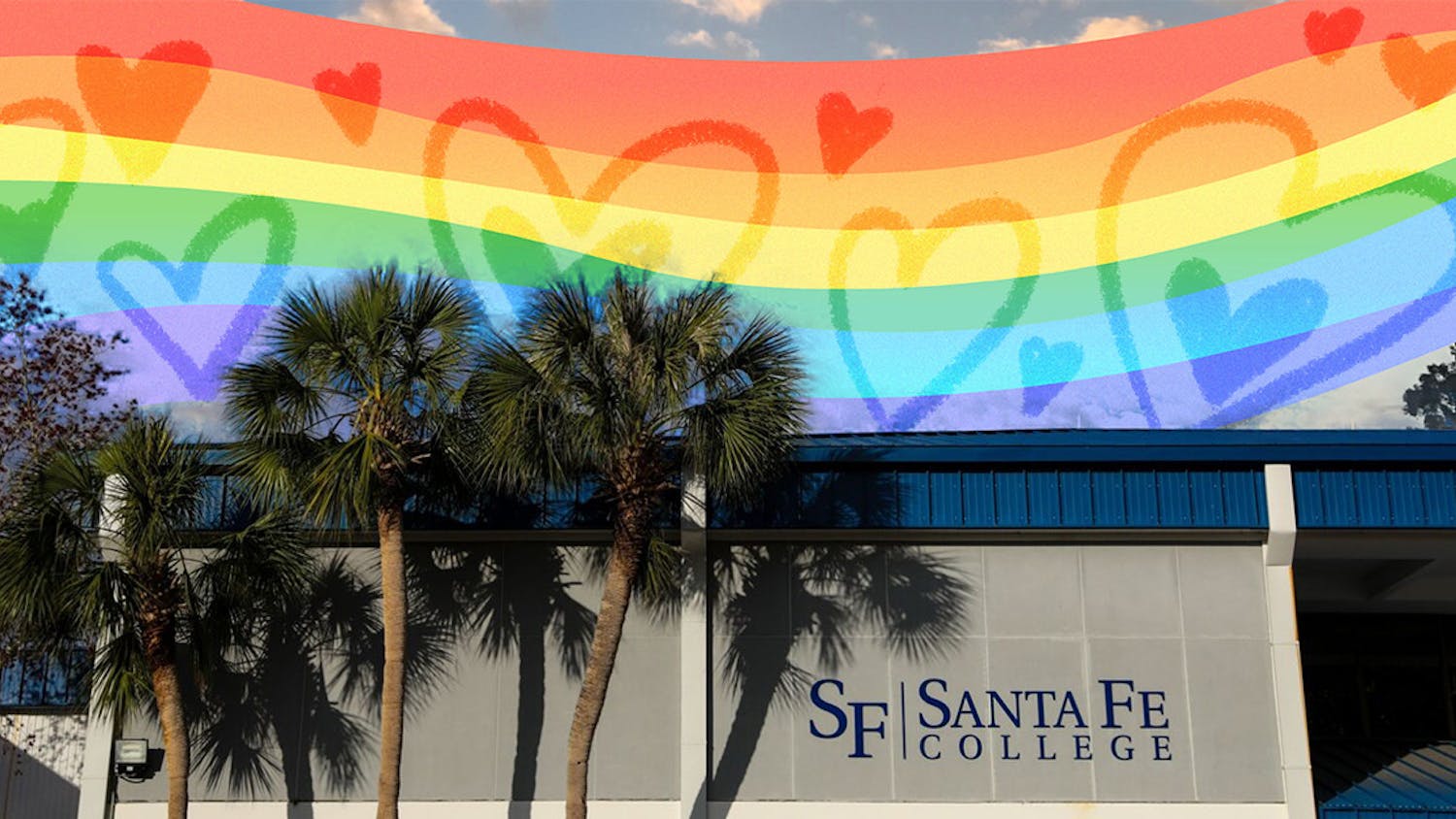From left to right: a woman, a man and another man, all holding hands. I thought it was a pretty interesting sight too, not necessarily because I was confused, but because I had never seen it before. I thought I never would either. Rather than walk up and ask for an interview, I decided to follow them. They reached the entrance to Library West and then all parted ways, so I sat down to think. Was that a genuine three- way relationship?
Today is Celebrate Bisexuality Day, a day used to raise awareness to the legitimacy of an identity. It is aimed to give bisexuals the smallest of comforts. Started by BiNet, “America’s umbrella organization and voice for bisexual, pansexual, fluid, queer-identified and all other of us ‘somewhere in between’” nineteen years ago, many bisexuals don’t even know it exists.
I have heard people refer to bisexuality as a phase or stories of college experimentation, but the face of this orientation is evolving in the eyes of culture. Bisexuality is slowly becoming more accepted as a sexual identity and into the forefront of society although many are still confused by its very nature.
Katie Nutter, a sociology graduate student specializing in bisexual research, has a hard time defining bisexuality. For her, it’s more than a sexual preference.
“It’s an ability to break outside gender roles, but it’s also this ability to ‘pass’ as either that can upset some LGBT members as well.” Katie’s research is more about how bisexuality is accepted in the workplace, how switching from a photo of your boyfriend on your desk to a photo of your girlfriend can change attitudes. She cares about the process that arises from the simplest of transactions, and in so, how acceptance can arise.
Bisexuality is a sea change; it says everything you thought you knew is only the beginning, but it’s that constant unknowing that makes it hard to accept for many. Bisexuals are a people who live their lives outside the demands of others, who think independently, who refuse to having things nailed into place. Uncomfortable with certain aspects of both communities and sexualities they merely define what it means to be themselves, and move forward. “Maybe it’s not about nailing things down,” Nutter adds. “Maybe it’s about the process.”
Common stereotypes are that bisexuals are confused, in a phase that will pass after college or attention whores. That’s only for girls. Men, on the other hand, are impossible to be bisexual. One homosexual experience is enough to have you labeled as gay for the rest of your life, and any reference to bisexuality has you labeled as confused. In fact, at the last Pride Student Union meeting, out of a congregation of about one hundred people only three were willing to speak to me about their bisexual identity. All were women.
“Straight people kind of have a worse stereotype, but they are more accepting,” says Jessica Moody, a political science senior. It’s this discrimination from both communities that makes it hard for some to actually identify as bisexual. “Most women probably wouldn’t even date a bi man,” she continues. “They probably would just think he’s gay.”
Moody has had her share of discrimination from both communities. Originally coming out as a lesbian, she now identifies as a bisexual after realizing she still has feelings for men. While her straight counterparts were fine with her decision, she says some lesbians were “so feminist they couldn’t be with any girl who had been with a man.”
When asked how they were going to celebrate Bisexuality Day, the bisexuals I interviewed had an interesting response. I half expected a typical collegiate answer along the lines of get drunk and party. “Live,” they all replied.





